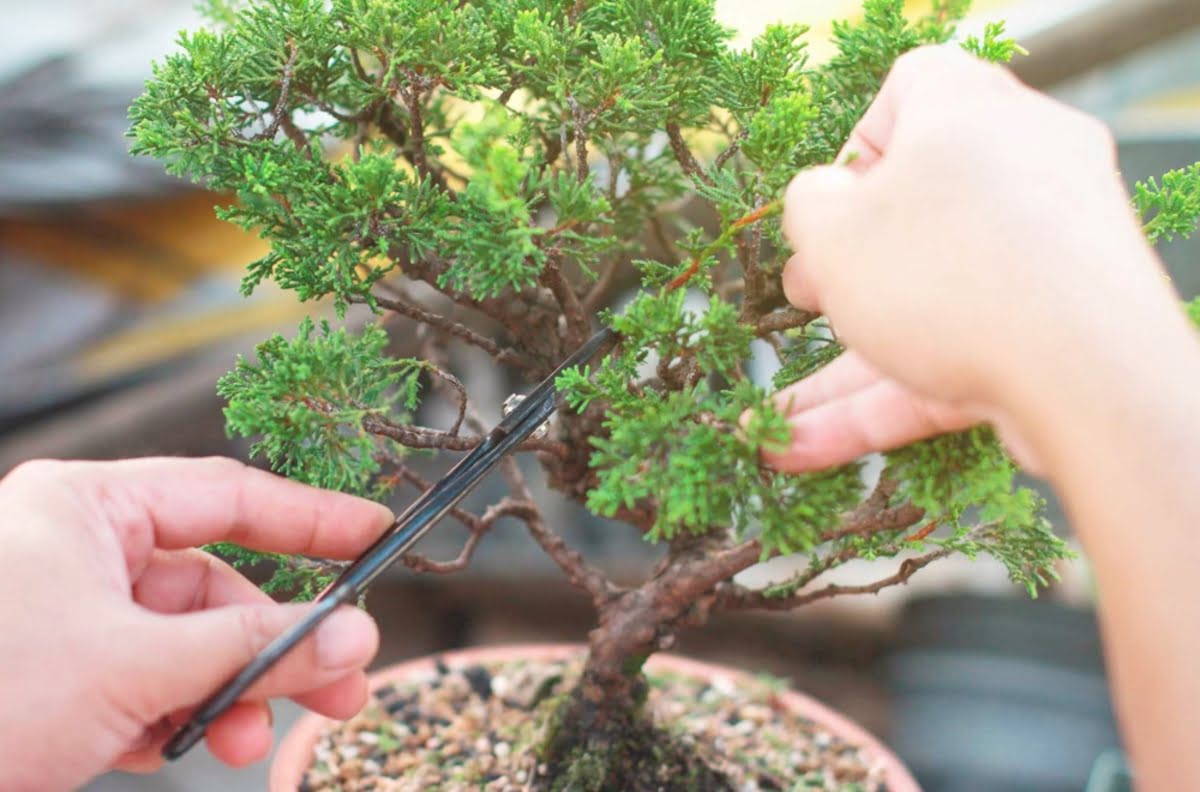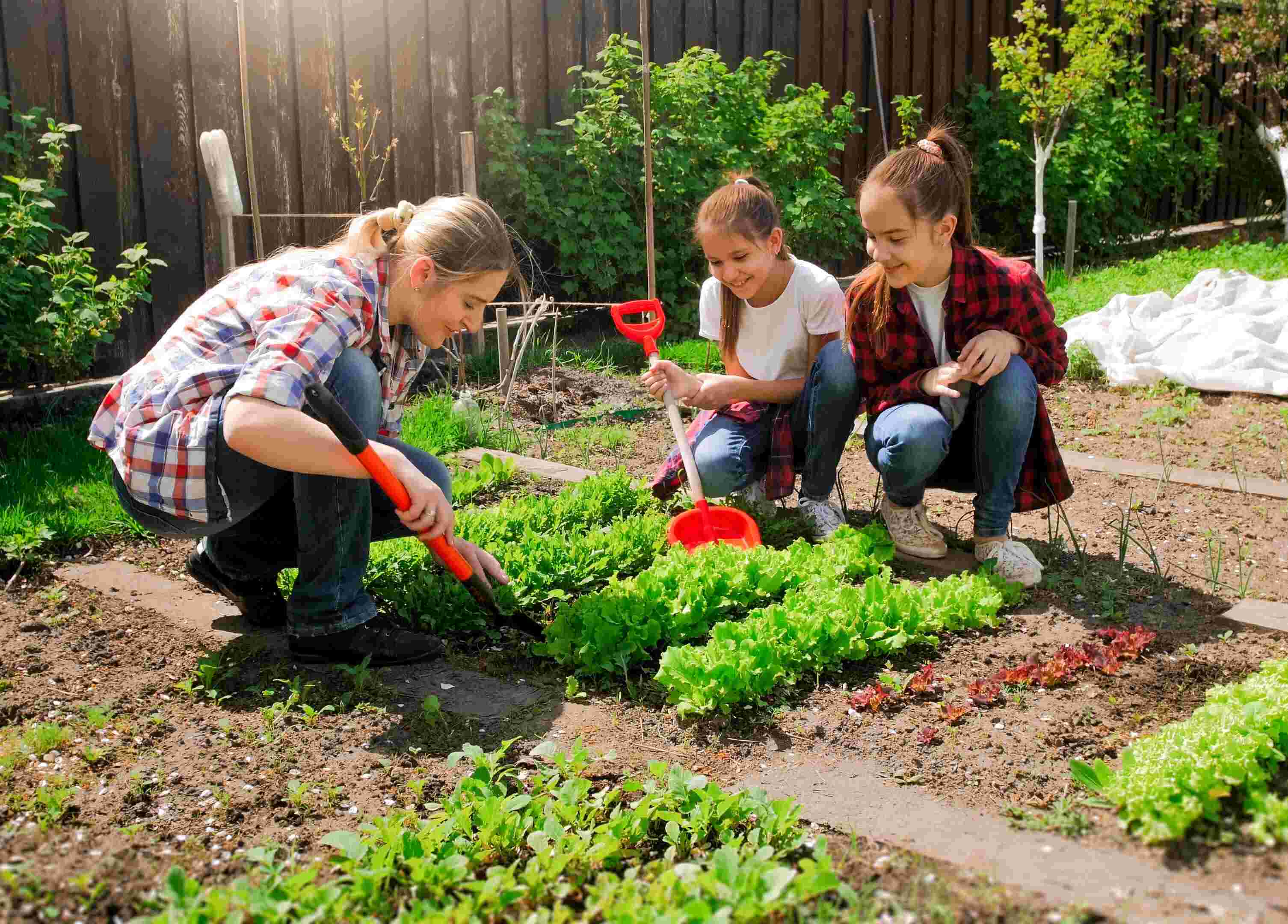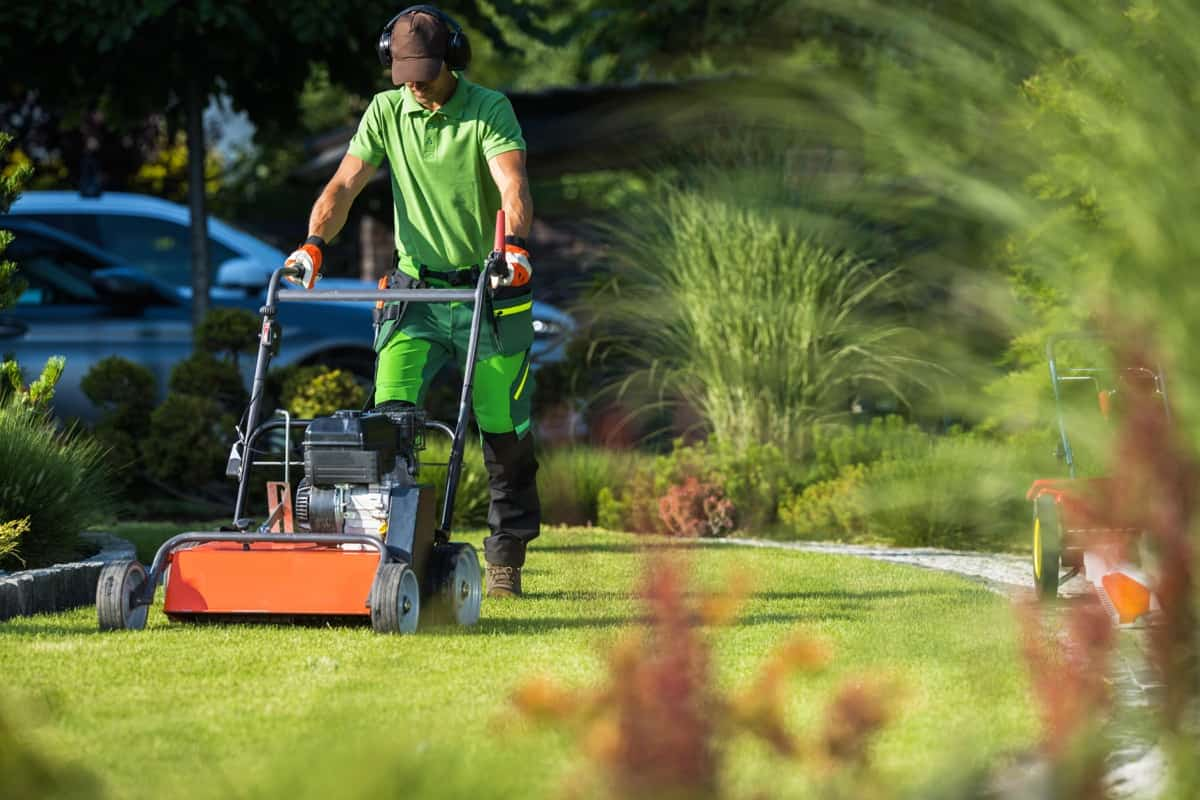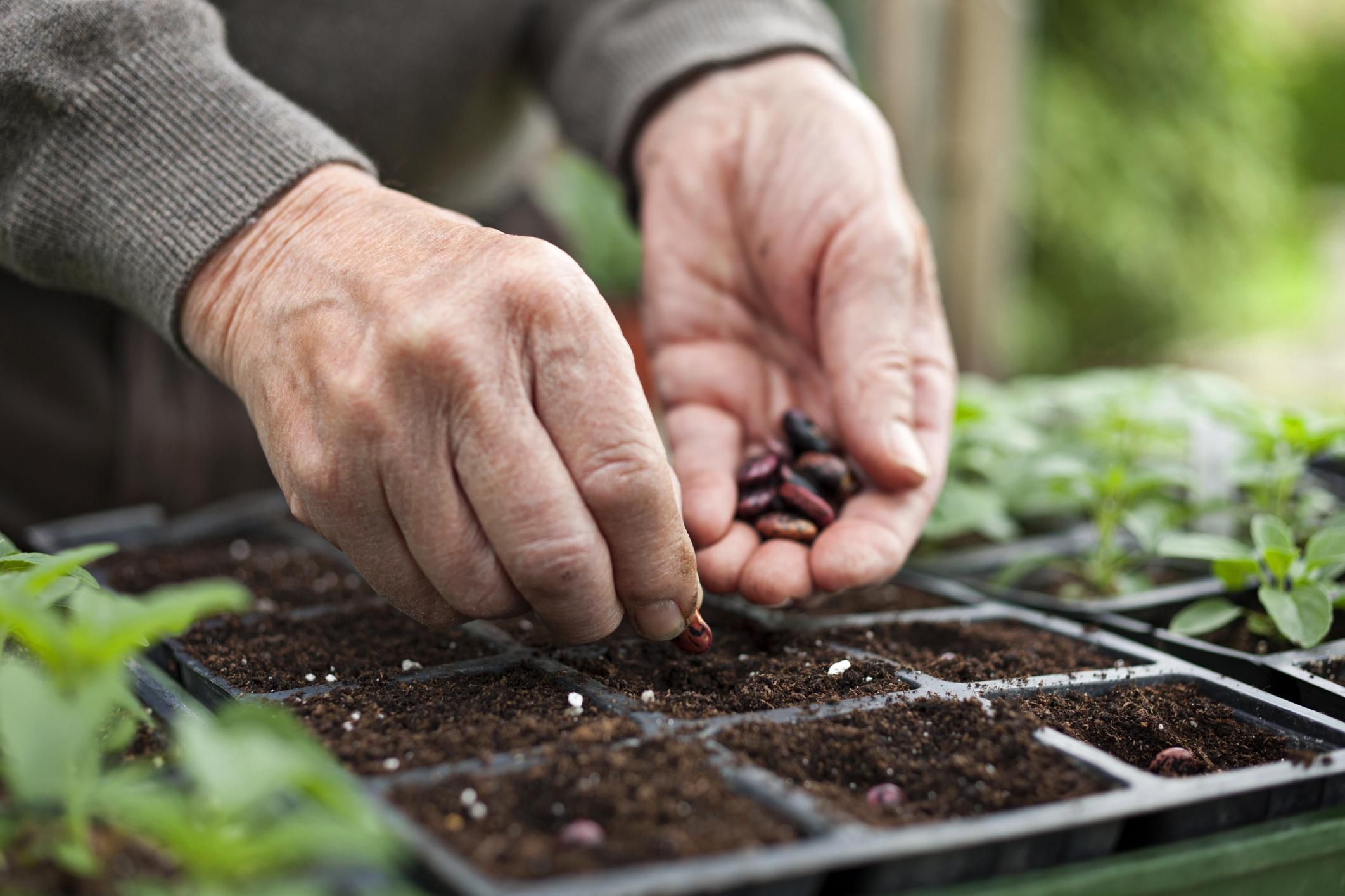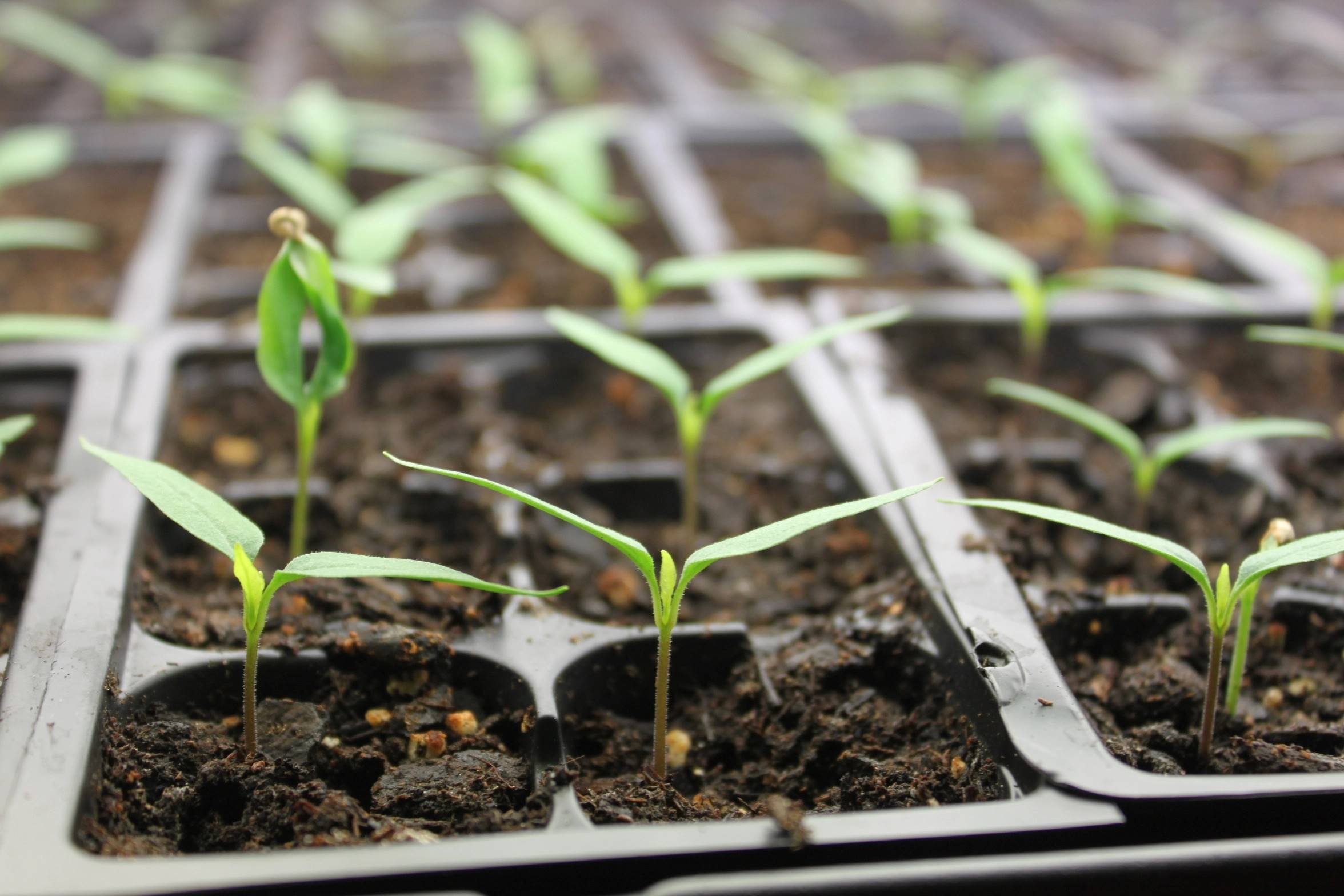Home>Gardening News and Trends>Gardening Trends>When To Start Landscaping
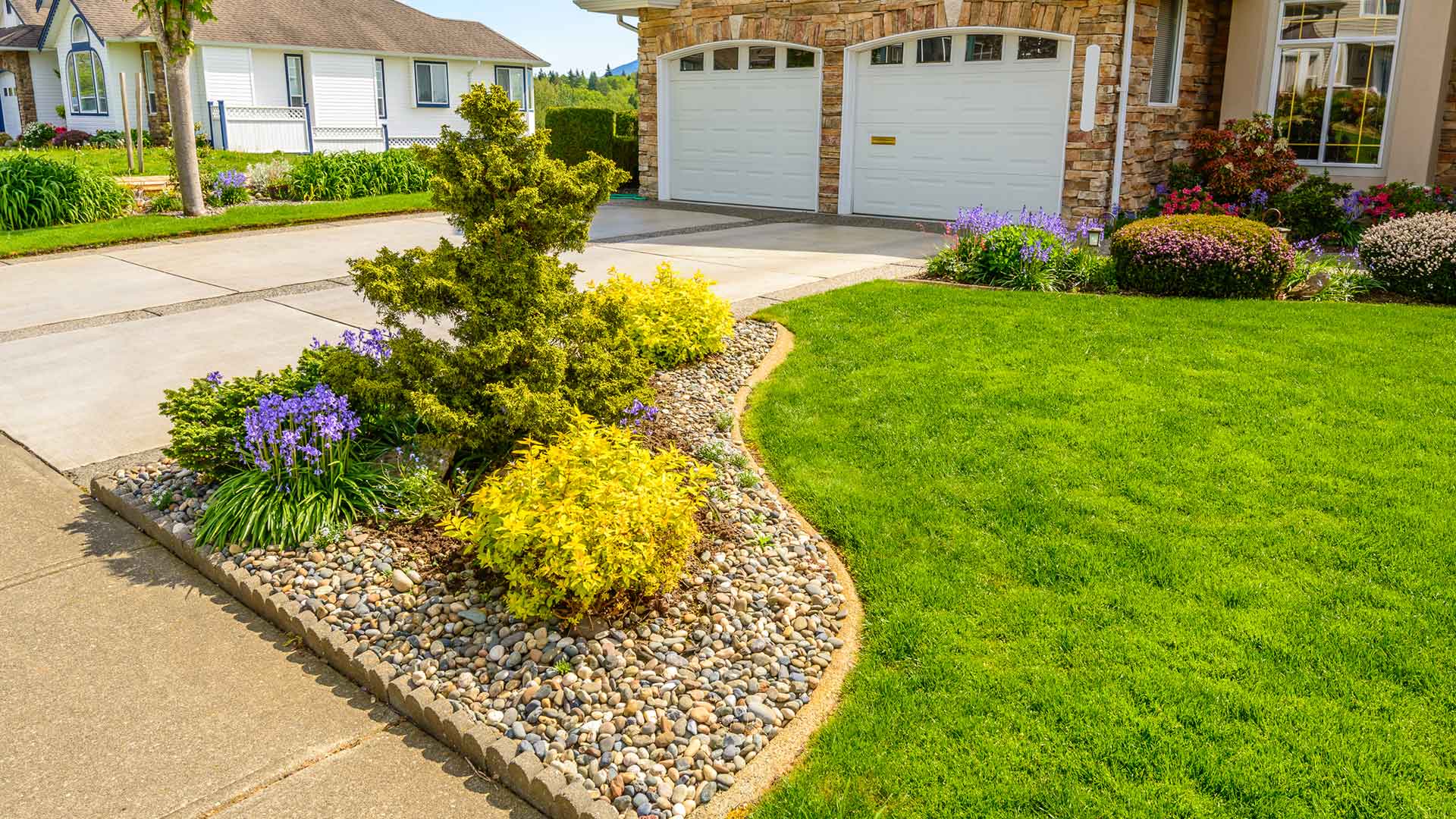

Gardening Trends
When To Start Landscaping
Modified: January 22, 2024
Discover the latest gardening trends and find out when is the best time to start landscaping your outdoor space. Get inspired with expert tips and ideas.
(Many of the links in this article redirect to a specific reviewed product. Your purchase of these products through affiliate links helps to generate commission for Chicagolandgardening.com, at no extra cost. Learn more)
Table of Contents
Introduction
Welcome to the wonderful world of landscaping! Whether you have just purchased a new home, want to spruce up your current outdoor space, or simply have a green thumb and a passion for gardening, landscaping is a fantastic way to add beauty, functionality, and curb appeal to your property.
Landscaping is more than just planting a few flowers and mowing the lawn. It is a creative and strategic process that involves careful planning, design, and implementation to transform your outdoor space into a personal oasis. From choosing the right plants and hardscape features to considering the climate and soil conditions, there are various factors to consider before embarking on your landscaping journey.
In this article, we will explore the key considerations and steps involved in starting your landscaping project. Whether you are a beginner or a seasoned gardener, this guide will provide valuable insights and tips to help you create a stunning landscape that reflects your style and enhances your outdoor living experience.
Factors to Consider before Starting Landscaping
Before diving into your landscaping project, it’s important to consider a few essential factors that will help ensure its success. Taking the time to plan and prepare will not only save you time and money but also contribute to the long-term health and beauty of your landscape. Here are some key factors to keep in mind:
- Budget: Determine your budget for the project. This will help guide your choices in terms of plants, materials, and professional services you may require.
- Time and Effort: Assess the amount of time and effort you are willing to invest in maintaining your landscape. This will influence the types of plants you choose and the complexity of your design.
- Climate and Weather: Consider the climate and weather conditions in your area. Certain plants thrive in specific climates, so it’s important to choose those that will thrive in your region.
- Sunlight and Shade: Observe the amount of sunlight and shade your yard receives throughout the day. This will help you determine which plants to select for different areas of your landscape.
- Soil Quality: Assess the quality of your soil. Conduct a soil test to determine its pH level and nutrient content. This will enable you to make any necessary amendments to create an optimal growing environment for your plants.
- Water Availability: Evaluate the availability of water in your area. Consider whether you have access to a water source or if irrigation systems will be needed.
- Local Codes and Regulations: Familiarize yourself with any local codes and regulations regarding landscaping. These may include restrictions on plant selection, height limitations for certain structures, or permits required for certain projects.
- Style and Functionality: Determine your desired style and functionality for your landscape. Consider factors such as outdoor entertaining, relaxation areas, play spaces for children, or sustainable practices, and incorporate these into your design.
By taking these factors into account, you will create a solid foundation for your landscaping project. Remember, planning and preparation are key to achieving the landscape of your dreams.
Season and Weather Considerations
Understanding the seasonal and weather patterns in your area is crucial when it comes to landscaping. Different plants thrive in specific conditions, and considering these factors will help you select the right plants and plan accordingly. Here are some important season and weather considerations to keep in mind:
1. Temperature and Frost: Pay attention to the temperature ranges and frost dates in your region. Some plants are more sensitive to cold temperatures and frost, while others can withstand harsher conditions. Take this into account when selecting plants for your landscape.
2. Rainfall and Drought: Consider the average rainfall in your area and regional drought patterns. Choose plants that are well-suited to your climate and that can tolerate both periods of heavy rain and dry spells. Implementing water-saving techniques and irrigation systems can also help mitigate the impact of drought on your landscape.
3. Wind and Storms: Assess the prevalence and strength of wind in your area. Strong winds can damage plants and hardscape features, so it’s important to choose resilient plants and secure structures appropriately. Additionally, consider the potential impact of storms on your landscape and plan accordingly to minimize potential damage.
4. Sunlight Exposure: Evaluate the amount of sunlight your landscape receives throughout the day. Different plants have different light requirements, so it’s important to select plants that are suited to the level of sunlight in each area of your yard. Take note of areas of shade as well and choose plants that thrive in those conditions.
5. Seasonal Changes: Consider the changes in vegetation and appearance throughout the seasons. Plan your landscape design to incorporate plants that provide color and interest during different times of the year. This will ensure that your yard remains vibrant and visually appealing all year round.
6. Microclimates: Be aware of microclimates within your landscape. Certain areas of your yard may have different temperature ranges or moisture levels due to factors like shade from structures or variations in soil composition. Adapt your plant selection accordingly to accommodate these microclimates.
By taking these season and weather considerations into account, you can create a landscape that thrives in your specific climate and provides year-round beauty. Remember to research and choose plants that are well-suited to your local climate, and be proactive in protecting your landscape from extreme weather events.
Soil Preparation and Testing
Healthy soil is the foundation of a successful landscape. Before you start planting, it’s essential to assess and prepare your soil to provide an optimal growing environment for your plants. Here are the key steps to soil preparation and testing:
1. Soil Testing: Conduct a soil test to determine the pH level and nutrient content of your soil. Testing kits are often available at local garden centers or through agricultural extension services. The results will help you identify any necessary amendments to balance the pH level and provide essential nutrients for your plants.
2. Soil Composition: Assess the composition of your soil, including its texture (e.g., sandy, loamy, clay) and drainage properties. Different plants prefer different soil types, so understanding your soil composition will guide your plant selection. If your soil lacks good drainage, you may need to implement measures such as adding organic matter or installing drainage systems to improve water movement.
3. Soil Amendments: Based on the results of your soil test, you may need to amend your soil to improve its quality. Common amendments include adding compost, organic matter, or specific nutrients to address deficiencies. These amendments will enhance the soil structure, increase its fertility, and promote better root growth and nutrient uptake by your plants.
4. Soil pH Adjustment: Adjusting the pH level of your soil can greatly impact plant health and growth. Most plants prefer a slightly acidic to neutral pH range, around 6.0 to 7.0. If your soil pH is too acidic or alkaline, you can amend it using materials such as lime (for acidic soil) or sulfur (for alkaline soil) to bring it within the optimal range.
5. Soil Aeration: Ensure that your soil is well-aerated to promote root development and nutrient absorption. Using a garden fork or aeration tools, gently loosen the soil to break up compaction and improve air and water circulation.
6. Mulching: Apply a layer of mulch around your plants to help retain moisture, regulate soil temperature, deter weed growth, and improve overall soil health. Organic materials like wood chips, straw, or compost make excellent mulches.
By properly preparing and testing your soil, you’re setting the stage for healthy and thriving plants. Take the time to understand your soil’s composition and make any necessary amendments to create an optimal growing environment. Your plants will thank you with vibrant growth and abundant blooms.
Designing a Landscape Plan
A well-thought-out landscape plan is the roadmap to creating a beautiful and functional outdoor space. It helps you visualize the layout, flow, and overall design of your landscape. Whether you prefer a formal or informal style, designing a landscape plan involves several important steps:
1. Assess Your Space: Start by evaluating your outdoor space and taking note of existing features such as trees, structures, and utilities. Consider factors like the size and shape of your yard, its topography, and any specific challenges or opportunities it presents.
2. Determine Purpose and Function: Define the purpose and functionality of your landscape. Are you looking for an area to entertain guests, a relaxing retreat, or a space for children to play? Knowing the intended use of different areas will guide your design decisions.
3. Create Zones: Divide your outdoor space into zones based on functionality or theme. This may include areas for dining, lounging, gardening, or showcasing specific plants or features. Each zone should flow seamlessly into the next, creating a cohesive and inviting landscape.
4. Consider Focal Points: Identify focal points in your landscape, such as a beautiful tree, a water feature, or a stunning garden sculpture. Focal points draw the eye and add visual interest, enhancing the overall design of your space.
5. Balance and Symmetry: Strive for balance and symmetry in your landscape design. Distribute plants, hardscape features, and structures evenly to create a harmonious and pleasing arrangement. However, don’t be afraid to incorporate asymmetry and create focal points for added visual interest.
6. Choose Plants and Materials: Select plants and materials that align with your design vision, functional needs, and climate conditions. Consider factors like height, color, texture, and seasonality to create a visually appealing and diverse plant palette. Additionally, choose complementary materials for paths, patios, and other hardscape features.
7. Incorporate Sustainability: Make environmentally-friendly choices by incorporating sustainable practices into your design. This may include using native plants, implementing water-saving techniques, and utilizing organic fertilizers. Creating an eco-friendly landscape contributes to the health of the environment and conserves natural resources.
8. Seek Professional Advice: If you feel overwhelmed or unsure about designing your landscape plan, consider consulting with a professional landscaper or garden designer. They can provide expertise, creative insights, and help bring your vision to life.
Remember, your landscape plan is a flexible document that can evolve and adapt over time. Regularly assess and make adjustments as needed to ensure your landscape continues to meet your needs and reflects your personal style.
Plant Selection and Planning
Choosing the right plants is essential for creating a stunning and thriving landscape. Proper plant selection and planning involve considering various factors, from the climate and soil conditions to the visual aesthetics and maintenance requirements. Here are some key aspects to consider when selecting and planning your plants:
1. Climate Compatibility: Factor in the specific climate of your region when selecting plants. Choose species that are well-adapted to your area’s temperature range, rainfall patterns, and overall climate conditions. Native plants are often a great choice as they are naturally suited to the local ecosystem.
2. Sun and Shade Tolerance: Evaluate the amount of sunlight and shade in your landscape. Different plants have varying light requirements, so ensure that you match plants to the appropriate exposure levels in your yard. Some plants thrive in full sun, while others prefer partial shade or full shade.
3. Soil Compatibility: Assess the soil conditions in your landscape and select plants that are compatible with the soil type and pH level. Some plants prefer well-drained soils, while others can tolerate clay or sandy soils. Consider conducting a soil test to determine the suitability of your soil for particular plant species.
4. Visual Appeal: Consider the visual aesthetics of your landscape when selecting plants. Think about the texture, color, and form of plants, and how they will complement each other and the overall design of your outdoor space. Create a balanced and appealing combination of plants for year-round interest.
5. Maintenance Requirements: Evaluate the maintenance needs of different plant species. Some plants are low-maintenance, while others require regular pruning, fertilizing, or watering. Be realistic about the time and effort you can dedicate to maintaining your landscape, and choose plants that fit your desired level of involvement.
6. Seasonal Interest: Plan for year-round interest by selecting plants that offer blooms and foliage color during different seasons. This ensures that your landscape remains visually appealing throughout the year. Consider incorporating a mix of evergreen plants, flowering shrubs, and perennials with varying bloom times.
7. Wildlife Attraction: Create a welcoming habitat for wildlife by choosing plants that support local pollinators and birds. Select nectar-rich flowers, native shrubs, and trees that provide food and shelter for birds, butterflies, and beneficial insects. This contributes to the ecological balance of your landscape.
8. Growth Characteristics: Consider the growth characteristics of plants in terms of height, spread, and growth rate. This ensures that plants will not outgrow their allocated space and create maintenance or aesthetic issues. Plan for plant spacing and allow for growth as your landscape matures.
By carefully selecting and planning your plants, you can create a visually appealing and sustainable landscape that thrives in your specific climate and soil conditions. Take time to research and choose the right plants for each area of your yard, and enjoy the beauty and benefits they bring.
Installing Hardscape Features
Hardscape features are the non-living elements of your landscape design that add structure, functionality, and visual interest to your outdoor space. They include elements such as pathways, patios, retaining walls, water features, and outdoor structures. Proper installation of hardscape features ensures their longevity and functionality. Here are some key steps to consider when installing hardscape features:
1. Design and Planning: Start by creating a detailed design and layout for your hardscape features. Consider the purpose, size, and materials that will complement your overall landscape design. Take into account the functionality and accessibility of the elements you want to incorporate.
2. Site Preparation: Prepare the area where you’ll be installing the hardscape features. This may involve clearing vegetation, leveling the ground, and ensuring proper drainage. Adequate site preparation helps create a solid and stable foundation for your hardscape elements.
3. Material Selection: Choose materials that suit your design style, budget, and maintenance preferences. Common hardscape materials include concrete, natural stone, pavers, bricks, and wood. Consider the durability, ease of installation, and long-term maintenance requirements of the materials you select.
4. Installation Techniques: Follow proper installation techniques to ensure the stability and functionality of your hardscape features. This may involve techniques such as compacting the base, using appropriate adhesives or mortars, and properly aligning and leveling each component.
5. Edging and Borders: Install edging or borders around your hardscape features to provide a defined and finished look. Edging helps contain materials like gravel or mulch, preventing them from spreading into surrounding areas. It also provides a neat and tidy appearance to your landscape design.
6. Proper Drainage: Ensure that proper drainage is incorporated into your hardscape installation. This helps prevent water pooling, erosion, and damage to your hardscape elements. Consider installing drainage pipes, french drains, or grading the area to direct water away from your hardscape features.
7. Lighting and Electrical: If you plan to incorporate lighting or electrical elements into your hardscape design, ensure that proper wiring and connections are installed by a qualified professional. This will ensure safety and a well-functioning lighting system to enhance the aesthetic appeal and usability of your landscape at night.
8. Sealants and Maintenance: Depending on the materials you used, consider applying sealants or protective coatings to your hardscape elements. This can help prevent staining, prolong their lifespan, and make them easier to clean. Regular maintenance and cleaning will also help preserve the beauty and functionality of your hardscape features over time.
Hardscape features can significantly enhance the functionality and aesthetics of your landscape. By following proper installation techniques and considering the design and materials, you can create a visually appealing and functional outdoor space that will be enjoyed for years to come.
Choosing the Right Tools and Equipment
Having the right tools and equipment is essential for successfully completing your landscaping projects. The proper tools not only make the work more efficient but also ensure that it is done correctly. Here are some key considerations when choosing the right tools and equipment for your landscaping needs:
1. Basic Gardening Tools: Start with the essential gardening tools, including a sturdy shovel, garden rake, hand pruners, and a garden hose with a spray nozzle. These tools will help with general planting, soil preparation, and basic maintenance tasks.
2. Digging and Excavating Tools: Depending on the scope of your landscaping project, you may need specialized tools for digging and excavating. This can include a spade, a digging fork, a trenching shovel, or a post-hole digger. These tools are useful for installing plants, digging trenches for irrigation systems, or creating holes for hardscape features.
3. Cutting and Pruning Tools: Invest in good-quality cutting and pruning tools to keep your plants healthy and well-maintained. A pair of sturdy bypass pruners, loppers, and hedge shears will allow you to trim and shape your plants, ensuring proper growth and aesthetics.
4. Power Tools: Consider using power tools to make your landscaping tasks more efficient. This may include a lawn mower for keeping your grass trimmed, a string trimmer for edging and removing weeds, and a leaf blower for clearing debris. These tools can save you time and effort, especially for larger landscapes.
5. Watering and Irrigation Equipment: Depending on your water source and the size of your landscape, you may need watering cans, a sprinkler system, or drip irrigation kits. These tools will help ensure your plants receive sufficient water, promoting healthy growth and conserving water resources.
6. Safety Equipment: Always prioritize safety when working in the garden. Wear gloves to protect your hands when handling plants and soil. Use safety goggles, ear protection, and sturdy footwear when operating power tools. Consider using knee pads or a kneeling pad to protect your knees while working close to the ground.
7. Equipment Storage: Keep your tools organized and protected by investing in proper storage solutions. This can be a toolshed, a storage box, or a pegboard system in your garage. Storing your tools appropriately will help prolong their lifespan and make them easily accessible when you need them.
8. Quality and Durability: Invest in high-quality tools and equipment that will last for multiple seasons. While they may require a higher upfront cost, quality tools are more durable and perform better, saving you money in the long run.
Choosing the right tools and equipment for your landscaping projects will make the work easier, more efficient, and more enjoyable. Consider your specific needs, budget, and the scope of your projects when selecting the tools that are right for you. With the proper equipment in hand, you’ll be ready to tackle any landscaping task with confidence.
Maintaining and Caring for Your Landscape
Maintaining and caring for your landscape is essential to keep it looking beautiful, healthy, and thriving. Proper maintenance practices will help your plants grow, prevent weed growth, and preserve the overall aesthetics of your outdoor space. Here are some key tips for maintaining and caring for your landscape:
1. Regular Watering: Water your plants consistently and deeply to promote healthy root growth. Consider the specific water needs of each plant and adjust your watering schedule accordingly. Depending on the climate and weather conditions, you may need to water more frequently during hot and dry periods.
2. Mulching: Apply a layer of mulch around your plants to help retain moisture, regulate soil temperature, and suppress weed growth. Mulch also adds a neat and finished appearance to your landscape. Make sure to replenish the mulch layer as needed, usually once or twice a year.
3. Pruning and Trimming: Regularly prune and trim your plants to maintain their shape, promote healthy growth, and remove any dead or diseased branches. Pruning also encourages flowering and overall plant vigor. Use proper pruning techniques and tools to avoid damaging the plants.
4. Weed Control: Stay on top of weed control by regularly removing weeds from your landscape. This can be done manually by hand-pulling or using gardening tools, or by utilizing weed control methods such as mulching or applying herbicides carefully and selectively.
5. Fertilizing: Provide your plants with the necessary nutrients by fertilizing them appropriately. Use organic or slow-release fertilizers to avoid over-fertilization and potential damage to your plants. Follow the recommended application rates and timing for each plant species.
6. Monitoring Pests and Diseases: Keep an eye out for any signs of pests or diseases in your landscape. Early detection allows for prompt treatment or prevention measures before these issues spread and cause significant damage. Consider using organic pest control methods whenever possible to minimize the impact on beneficial insects and the environment.
7. Seasonal Maintenance: Adjust your maintenance practices based on the changing seasons. This may include tasks such as winterizing plants, cleaning and storing garden tools, and preparing your landscape for the upcoming growing season. Stay proactive in your landscape care to ensure its long-term health and beauty.
8. Professional Help: If you’re unsure about specific maintenance tasks or need assistance with larger projects, consider hiring professional landscapers or garden maintenance services. They have the expertise and equipment to handle complex tasks and can provide valuable advice and recommendations for your landscape.
Regular maintenance and care are key to enjoying a flourishing and attractive landscape. Dedicate time to these practices periodically throughout the year to keep your plants healthy, control weeds, and maintain the overall beauty of your outdoor space.
Conclusion
Creating a stunning and thriving landscape requires careful planning, attention to detail, and a bit of hard work. By considering factors such as climate, soil conditions, and plant selection, you can design a landscape that not only enhances the beauty of your outdoor space but also provides functionality and sustainability. Preparing the soil, installing hardscape features, and choosing the right tools and equipment are essential steps to ensure successful implementation of your landscaping projects.
Maintaining and caring for your landscape is equally important. Regular watering, mulching, pruning, and weed control are necessary tasks to keep your plants healthy and your landscape looking its best. By monitoring for pests and diseases and providing appropriate fertilization, you can prevent problems and maintain the long-term health of your landscape.
Remember that landscaping is a creative and ongoing process. As your landscape grows and evolves over time, reassessing and making adjustments are essential. Continue to explore new plant varieties, experiment with different designs, and incorporate sustainable practices to create a landscape that reflects your personal style and values.
So, grab your gardening gloves, get out in nature, and start transforming your outdoor space into a vibrant and inviting oasis. With the right knowledge, careful planning, and a touch of creativity, you can create a landscape that brings you joy, relaxation, and a deeper connection to the natural world.
